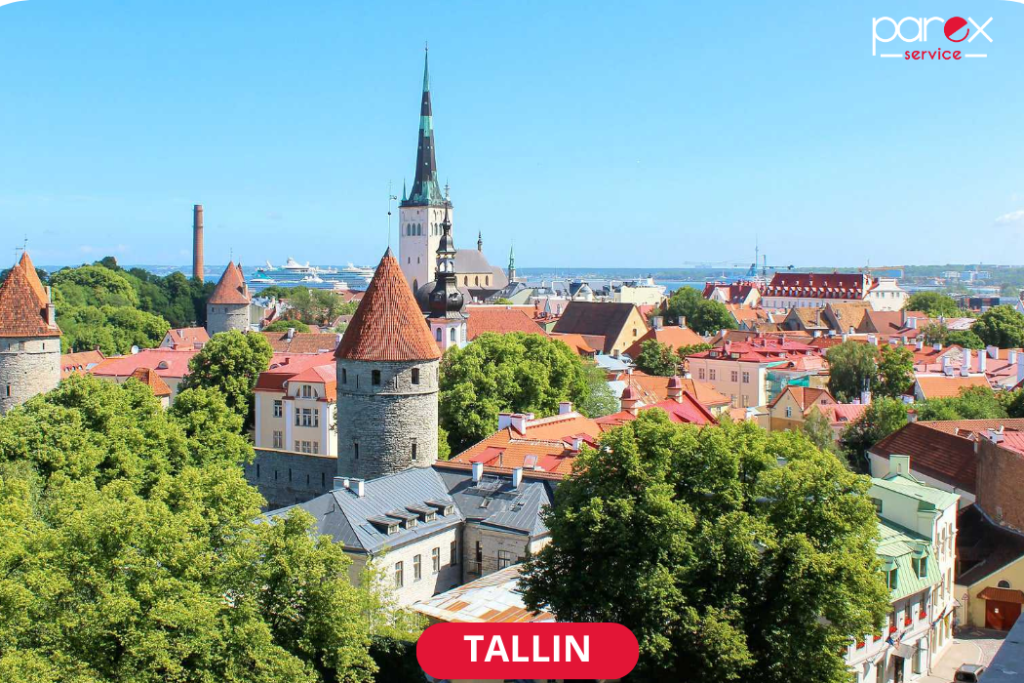Schengen Visa
Introduction
The Schengen Area refers to a significant part of Europe, consisting of 27 current member countries and 2 additional countries, Romania and Bulgaria, which are expected to join by the end of this year. Travel between these countries is unrestricted, and there are no border controls for movement among Schengen member states. While these countries have made travel very easy for their citizens, they are strict with foreign nationals who require visas. Most Schengen countries are members of the European Union, with the exception of Switzerland, Iceland, and Norway, which are not EU members, as well as Ireland and Cyprus, which are EU members but not part of the Schengen Agreement.
Citizens of Schengen member countries, EU citizens, foreign residents of Schengen countries, and citizens of 55 non-EU countries—such as Japan, the UAE, Canada, and Australia—can travel to Schengen countries without a visa for stays of less than three months.
Iranian nationals must obtain a visa to travel to the Schengen Area and can move freely among all Schengen countries as long as their visa is valid. Typically, you should apply for a visa from the first Schengen country you plan to enter or the country where you will spend the most time.
Types of Schengen Visas

Single Schengen VISA
Uniform Schengen Visa (USV)

Limited credit VISA
Limited Territorial Validity Visas (LTV)

National VISA
National Visas
Single or unified Schengen visa
Uniform Schengen Visa (USV)
This visa allows entry and travel issued by a Schengen country, enabling the holder to stay for a minimum of a few days to a maximum of 90 days within a six-month period in the Schengen area. This visa is further categorized based on travel purpose into three types: A, B, and C.
Type A Visa
This is an airport transit visa, issued to individuals traveling between two non-Schengen countries who must stop at a Schengen airport to change flights. Travelers are not permitted to leave the airport and can only wait for their connecting flight. If you intend to exit the airport to change flights at another Schengen airport, you do not qualify for the transit visa and must apply for a standard Schengen visa.
Type B Visa
This is a Schengen transit visa that allows an individual to transit through several Schengen countries by car or train within a maximum of five days to reach a non-Schengen country.
Type C Visa
This is a short-stay visa that allows individuals to stay and travel within Schengen countries according to the visa’s validity. Currently, this type of visa is available in two forms: single-entry (allowing one entry into the Schengen area) and multiple-entry. The multiple-entry visa allows for unlimited entries during its validity period, but each stay cannot exceed 90 days within a six-month period. Multiple-entry visas can be issued for 3 months, 6 months, or from 1 to a maximum of 5 years.
Limited credit and national visas
Limited Territorial Validity Visas (LTV)
This is a type of temporary Schengen visa issued for emergency reasons and specific humanitarian circumstances, such as asylum. The holder of this visa can only travel within the country or countries specified on the visa and is not permitted to enter other countries.
National Visas
National visas, also known as Type D visas, are granted to individuals who need to stay in the issuing Schengen country for more than 90 days for purposes such as studying, working, family reunification, or investment. This type of visa is commonly issued to foreign students and others in similar situations.
Requirements for Applicants to Obtain a Schengen Visa
- Financial Stability: Have good finances, a strong bank account, and property ownership.
- Age and Marital Status: Single applicants under 30 without previous travel to Europe may face more challenges.
- Job Background: A solid work history (over 10 years), a reputable job (like a doctor or manager), and proof of insurance and tax payments help your application.
- Travel Purpose: Provide a clear travel plan with details about your trip.
- Travel History: Previous trips to Europe are beneficial.
- Invitation Letter: A valid invitation from someone in Europe strengthens your application.
Required Documents for a Schengen Visa
The documents and information we submit to the embassy for obtaining a visa are the most critical factors in securing the visa. Incorrect documents or false information can lead to visa rejection and may prevent you from obtaining a visa for years. Among the most important documents are bank statements, which must contain accurate and clear information regarding your financial transactions. Below is a list of the necessary documents for the visa.
Identification Documents
- The original passport of the applicant, valid for at least one year, along with all old passports that contain visas.
- A copy of all pages of the passport that have visas or stamps.
- A completed personal and family information form for each applicant separately.
- Two recent colour photographs (3.5 x 4.5 cm) with a white background.
- The original birth certificate.
- A certificate of enrolment for children who are traveling with you.
- A notarized consent letter for children traveling without one of their parents

Financial Documents
- A bank statement letter in English, confirming financial solvency, covering a six-month period, with the bank branch’s stamp and signature.
- Ownership documents, investment papers, stock purchase agreements, and bank deposit documents.
- For tourist visa applications: The bank balance requirements for the head of the family should be at least 600 million tomans over the six-month period, for the spouse at least 200 million tomans, and for each child at least 100 million tomans. This means that for a family of two, the minimum required balance is 800 million tomans; for a family of three, it is 900 million tomans; and for a family of four, the minimum balance should be one billion tomans.
Employment Documents
- Government Employees: Employment decree, personnel ID card, insurance list, and payslips for the last three months.
- Private Company Employees: Employment certificate, insurance list, and payslips for the last three months.
- Employers: Company establishment and amendment advertisement, insurance list, payslips for the last three months, and proof of tax payments.
- Doctors: Medical license, medical association card, clinic license, and the latest tax and insurance payment statements.
- Engineers: Engineering license or construction permit.
- Factory Owners and Freelancers: Operating license, business license, commercial card, insurance documents, and proof of tax payments.
- Retirees: Retirement decree and payslips for the last two months of retirement

Other Documents
- Air Ticket: A reservation for a round-trip airline ticket.
- International Travel Insurance: Coverage for medical expenses with a minimum amount of 30,000 euros.
- Hotel Reservation: A hotel booking or an invitation letter from relatives or friends if you will be staying at their home during your trip.
- Invitation Letter: If you have an invitation letter, it should include the details of both the inviter and the visa applicant.
Visa service office employees (such as VFS, VISMETRIC, and BLS) will take your digital fingerprints on the day you apply for your visa. They may also interview you, or the embassy you applied to might contact you a few days later for a phone interview to determine whether you meet the conditions for obtaining a Schengen visa and whether your documents and plans align with the type of visa requested and your purpose of travel.
Here are some potential questions you might encounter
- What is the purpose of your trip to our country?
- Why do you need a 1-month or 3-month visa?
- Why do you think we should grant you a visa?
- What will you do if your visa is rejected?
- Are you planning to visit a friend or family member living in the Schengen area?
- Are you traveling with your spouse?
- What is your occupation? Do you have a letter from your employer?
- Who will be covering the travel expenses?
- How will you prove that you will leave the Schengen area before your visa expires?
- Have you previously applied for a Schengen visa?
- Do you have children? How old are they?
Schengen Visa Interview

Schengen Visa Costs for Each Applicant

Embassy Fees
This fee covers both the embassy and the fingerprinting center. It is free for children under 6 years old, 70 euros for children aged 6 to 12 years, and 110 euros for those over 12 years old.

Document Translation Costs
These costs vary depending on the number of documents and the language required for translation.

Travel Agency Fees
This is the cost charged by the travel agency that will assist the applicant in obtaining the visa.
Validity of the Schengen Visa
The validity of a Schengen visa and the number of days you can use it are different aspects and are as follows:
- Validity Period: This refers to the time frame during which you can start your journey and must leave the destination country after your trip. For example, in a 1-month visa that states valid from March 10 to February 10, you can begin your travels from the start date, March 10, and must exit the Schengen area by February 10 at the latest. The validity of a visa typically ranges from 20 days, 45 days, 3 months, 6 months, 1 year, to 2, 3, 4, or 5 years.
- Days of Use: This is the number of days specified on the visa, indicating how long you can stay in the destination country and within the Schengen area.
Steps for Applying for a Schengen Visa
- Choose the Type of Visa: Determine the type of visa based on the purpose of travel, select the destination country, and decide on the travel dates.
- Prepare and Translate Required Documents: Gather all necessary documents and have them translated.
- Complete the Visa Application Form: A separate form must be completed for each applicant.
- Schedule an Appointment with the Embassy: Book a time for your appointment at the embassy.
- Submit Documents, Attend Interview, and Provide Fingerprints: Deliver the required documents in person at the embassy, attend the interview, and provide fingerprints.
- Pay the Embassy Visa Fee: Complete the payment for the visa application.
- Wait for 15 to 30 Days: Finally, wait for your visa application to be processed and receive your visa.
- Submission of incomplete, fraudulent, or ambiguous documents.
- Incomplete or contradictory information in the application file.
- Having an open immigration case in a Schengen country.
- Pregnancy (in some cases).
- Failing to leave a Schengen country before the visa expiration date during previous trips.
- Previous visa rejections from a Schengen member country.
- A lengthy prison record, criminal conviction, or security-related issues.
- Insufficient proof of financial means and bank balance.
- Lack of a suitable history of international travel.
- Unstable employment or lack of family ties and property in the home country.
- If immediate family members have previously applied for asylum in a Schengen country.
- Medical issues or specific diseases that could impose treatment costs on the destination country.
- An invitation letter deemed inadequate due to incomplete documents or weak financial status of the inviter.
- The purpose of the visit is not convincing, or the travel duration is not appropriate for the stated purpose.
Reasons for Schengen Visa Rejection

Appealing a Schengen Visa Rejection
Important information about Schengen visa
Converting a Tourist Visa to a Work or Study Visa
A tourist visa cannot be converted to a work or study visa. After the visa expires, you must leave the Schengen area.
Converting a Tourist Visa to Permanent Residence
A tourist visa cannot be converted to long-term residency. To migrate permanently, you must first apply for other residency options such as study, work, or investment. If you are in Europe on a tourist visa or any other non-immigrant visa and wish to change your visa status (e.g., through marriage to a European citizen or obtaining a work contract in Europe), you must leave Europe before your visa expires and apply for a new visa.
Staying Beyond the Visa Validity
If you do not leave the Schengen area before your visa expires, you will face penalties, which can negatively impact your ability to obtain a Schengen visa in the future.
Entering Schengen Countries with a Schengen Visa
Holders of a Schengen visa can enter at an airport or a port of entry, where border officials have the authority to review documents and belongings. They may grant or deny entry based on this review. It is essential to be fully informed about what documents to carry and what items are permitted or prohibited for entry before traveling to Europe.
Processing Time for a Schengen Tourist Visa
Typically, the processing time for a tourist visa from the date of the interview to receiving a response is between 10 to 30 days.
Financial Means Requirement
Financial documentation and bank balance are crucial for visa approval. The required amount varies depending on the type of visa, but for a tourist visa, it is advisable to have an average of 10,000 to 20,000 euros per person.
Childbirth
Schengen member countries do not issue visas for childbirth in Europe. If your child is born in Europe while you hold a tourist visa, your child will not automatically receive European citizenship.
Document Submission to the Embassy
On the day of the interview, the applicant must personally present themselves at the visa service office with all necessary documents.
Parex services for Schengen VISA
- Assistance with Obtaining Schengen Visas: Support for acquiring Schengen visas for Italy, France, and other Schengen countries.
- Completion of Documents and Visa Forms: Help with filling out the necessary documents and visa application forms for all Schengen embassies.
- Scheduling Embassy Appointments: Arranging appointments for visa applications at all Schengen embassies.







